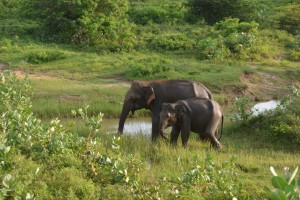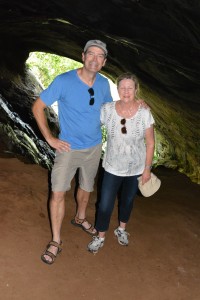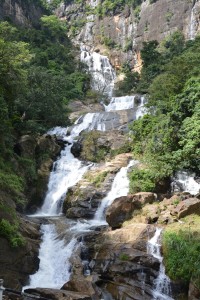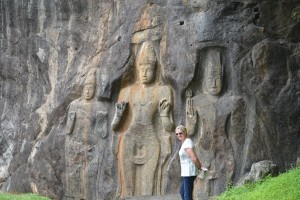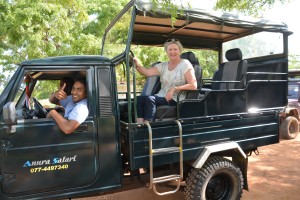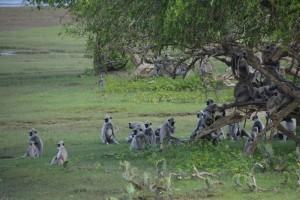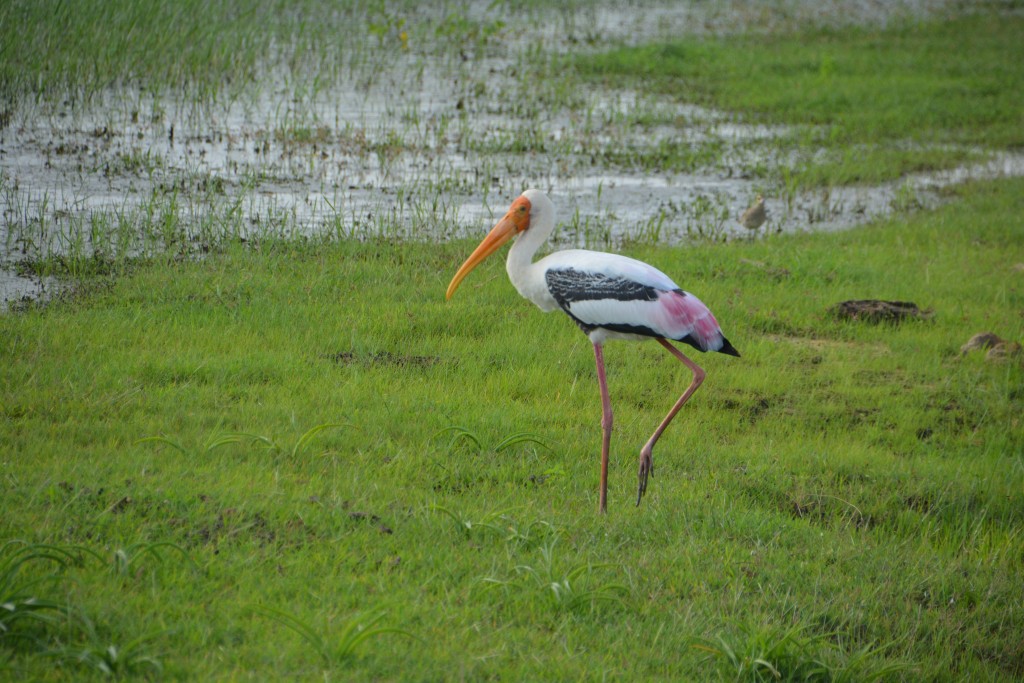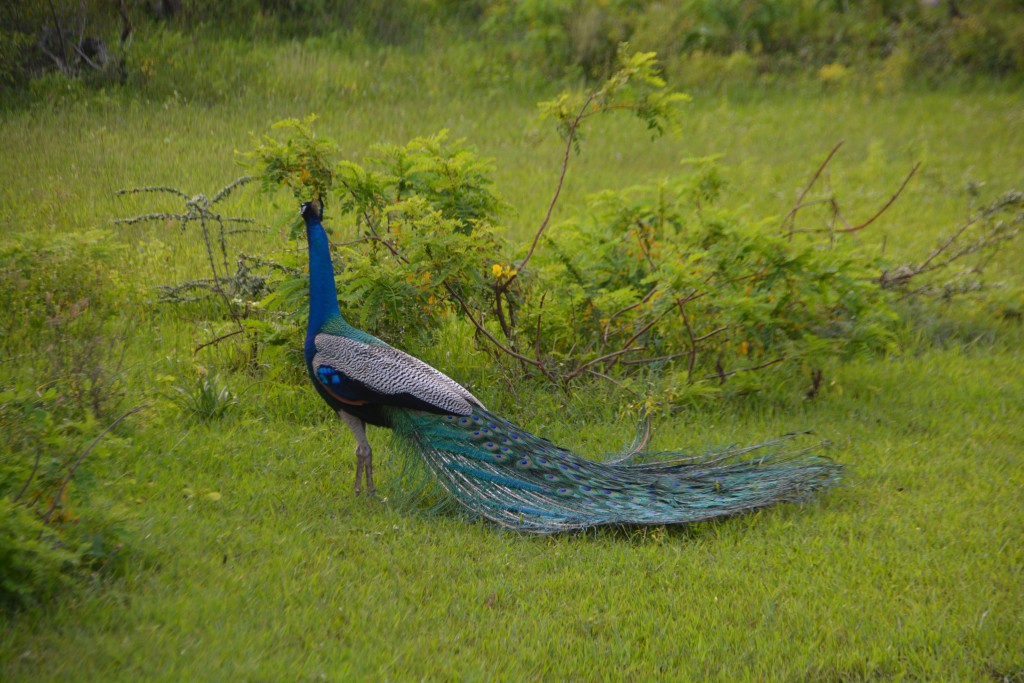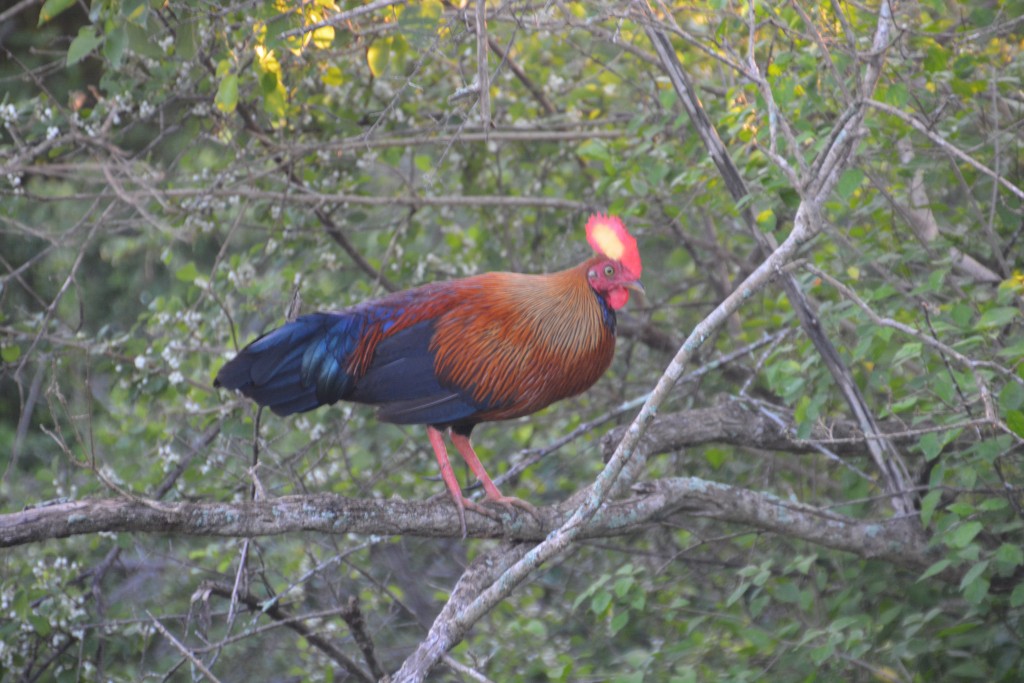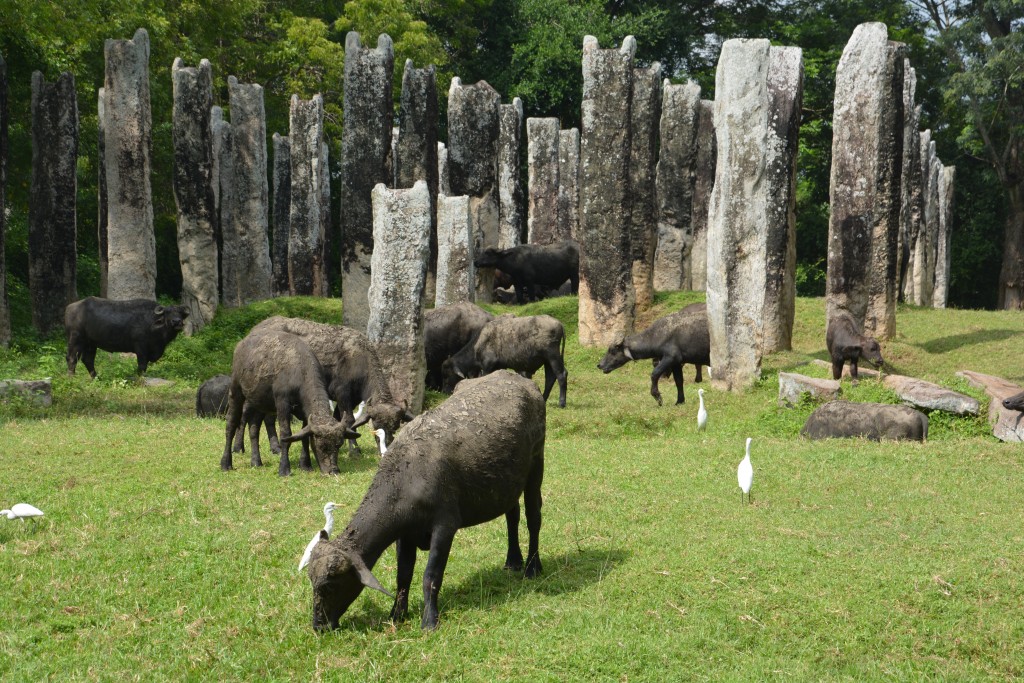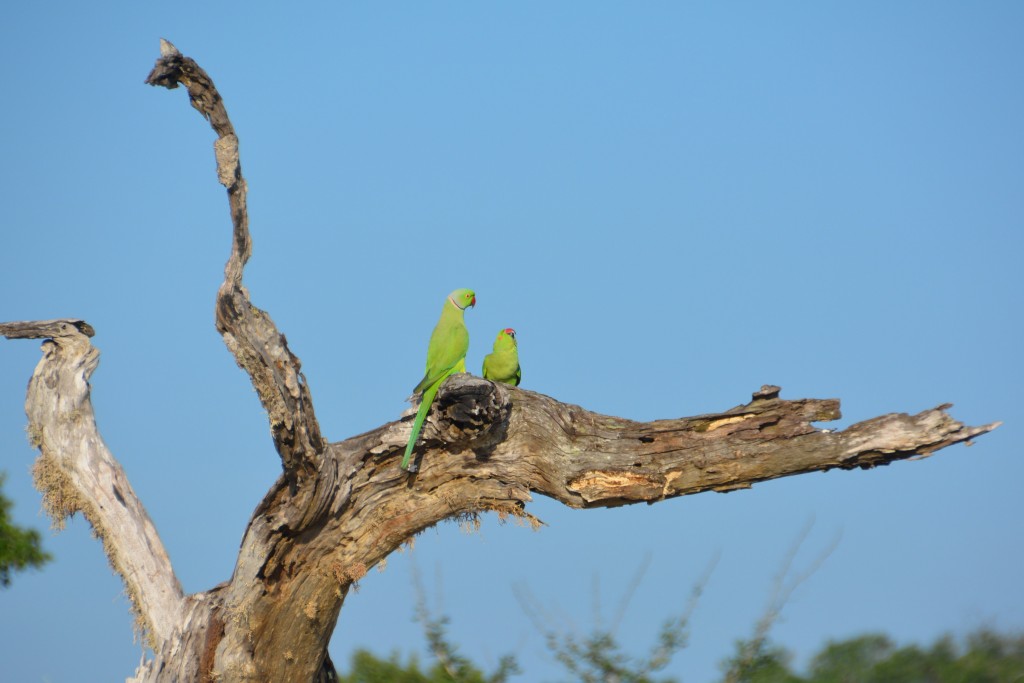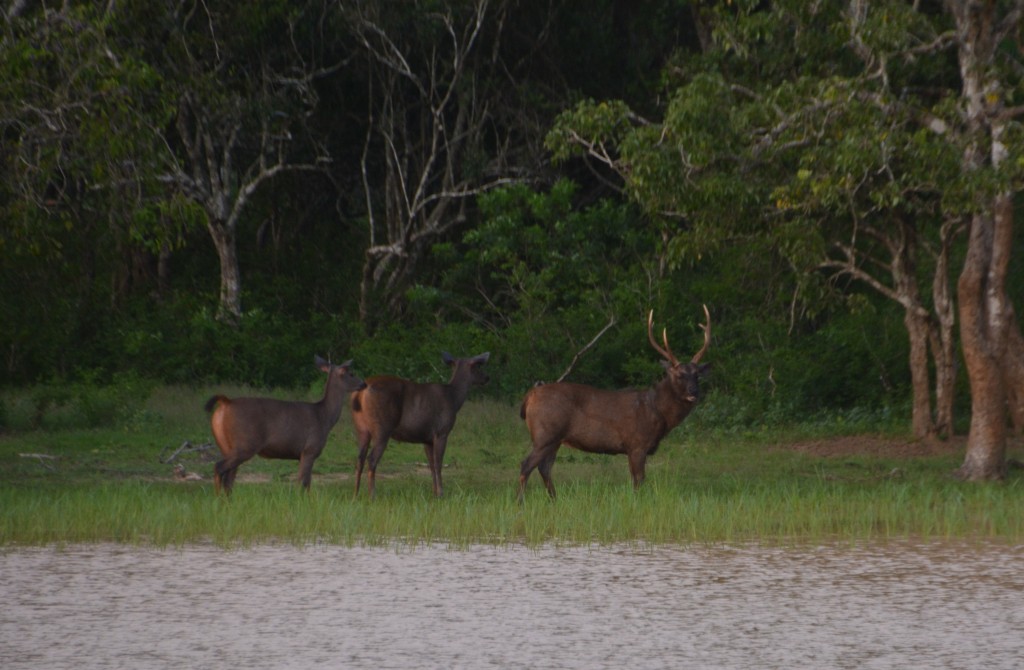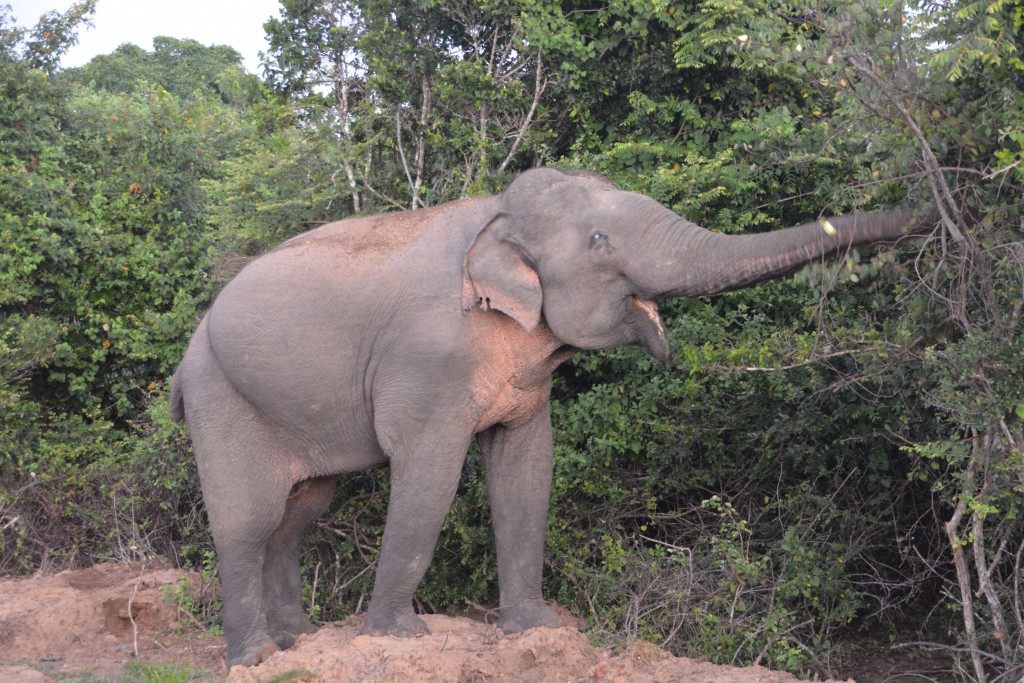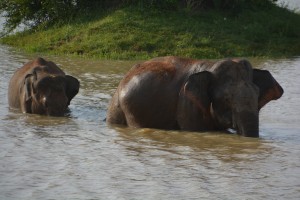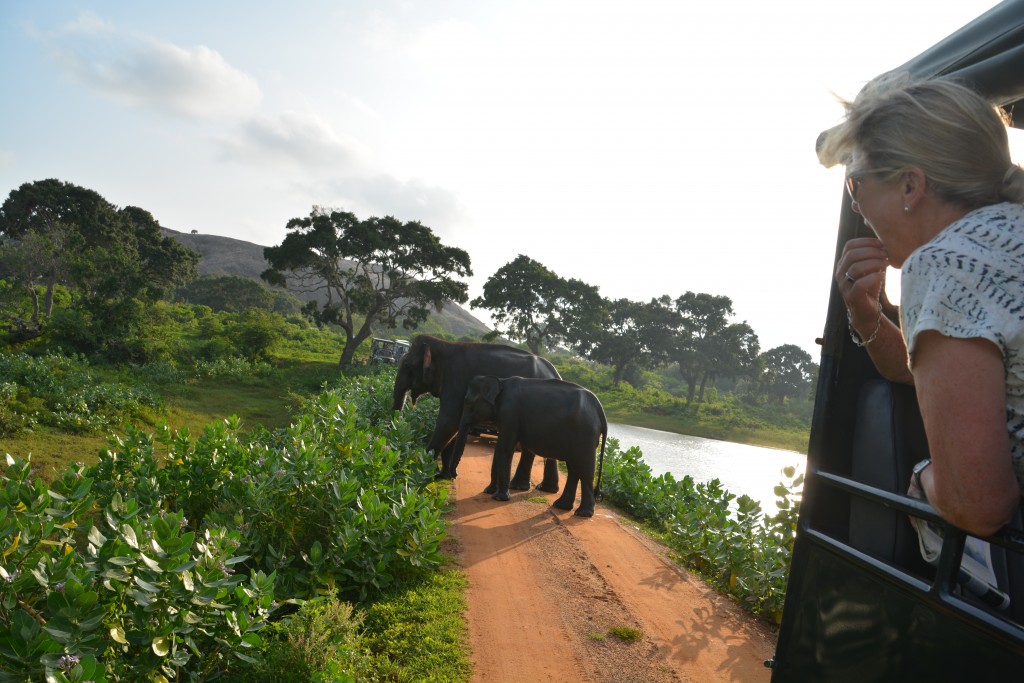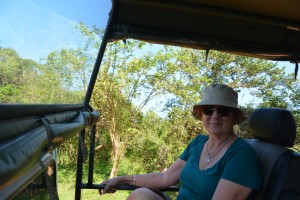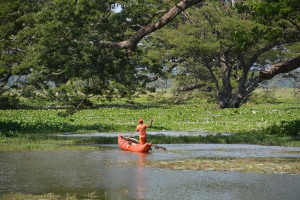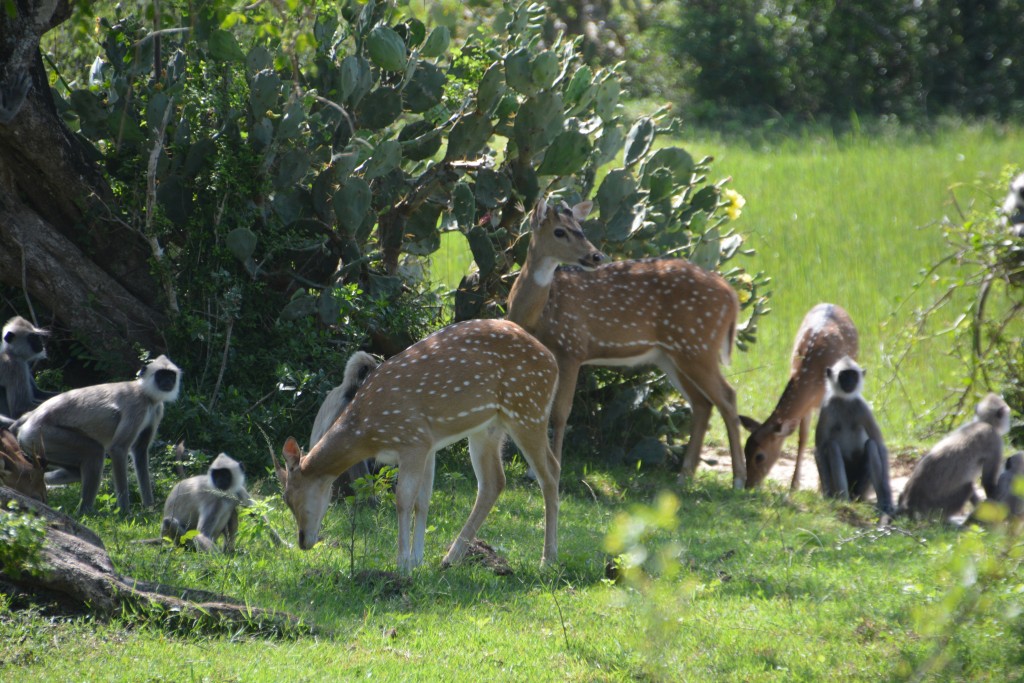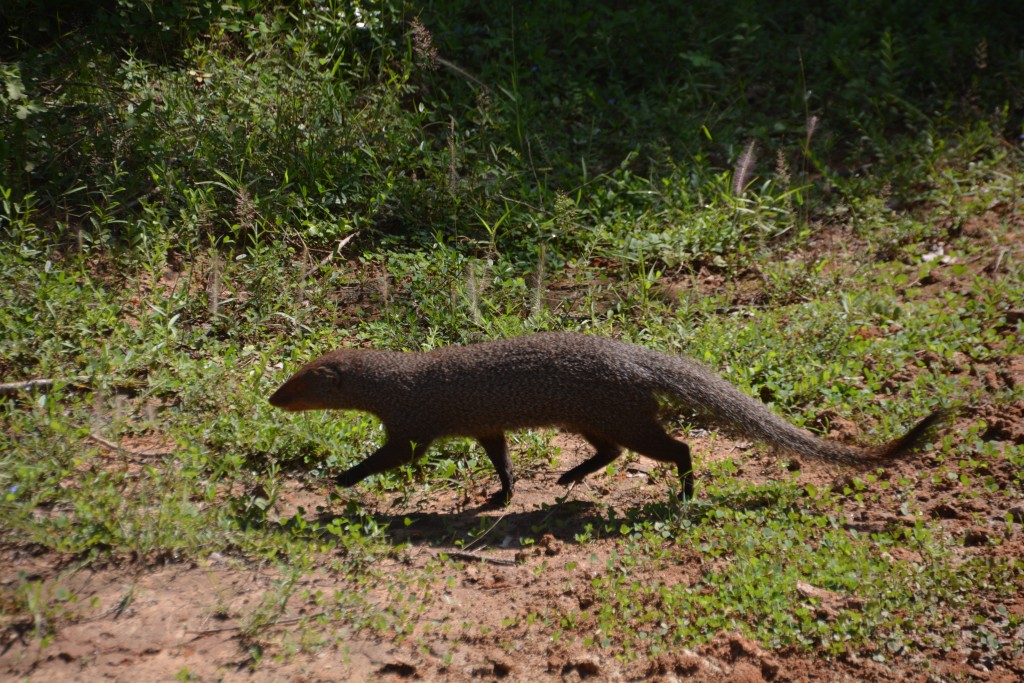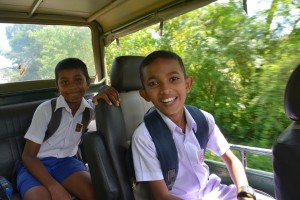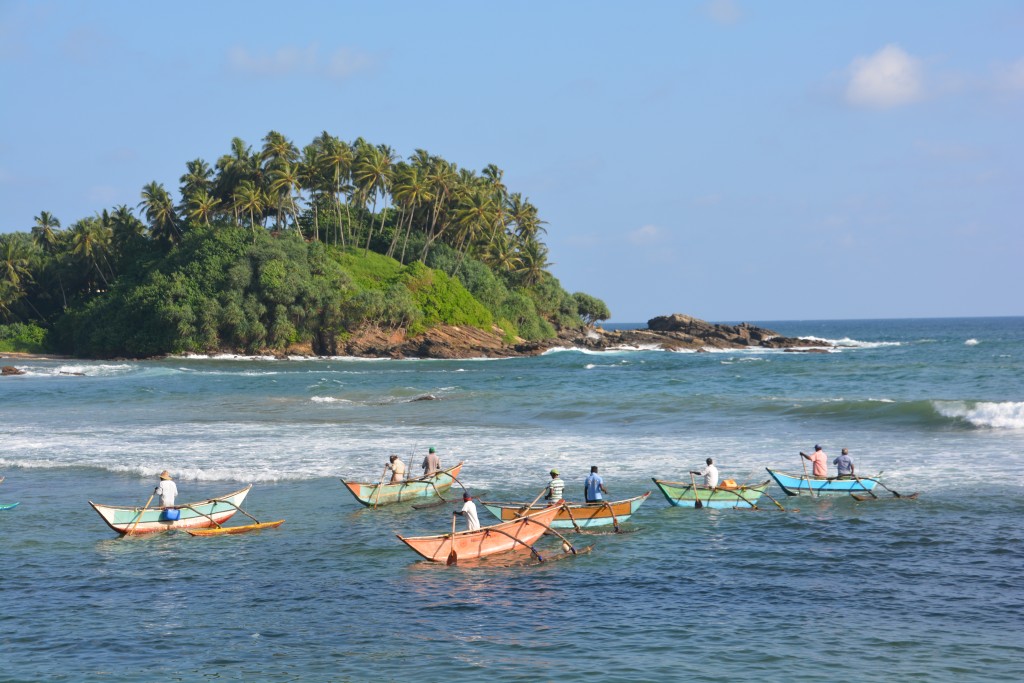Have you seen any leopards lately?
The Sri Lankan leopard is one of eight sub-species of leopards in the world and with less than 500 still in existence it is also one of the rarest. Yes, we had seen leopards in East Africa but that was there and then, this is now. So one of our missions in coming to Sri Lanka was to see a leopard. And the best place to do that is in Yala National Park, down on the south coast of the island. We were on a leopard hunt, Nikon ready to fire.
But we had much territory to cover before reaching Yala and many sights to see along the way. Rawana Caves were named after a mythical Hindu god and contained art work that was dubiously reported to be 2,000 years old. So after a vigorous climb up some steep and slippery steps we made it to the mouth of the large open cave. From here our young guide had two significant revelations for us – first, the inner cave to see the art was a further 500 metres into a small dark cavern, and second, the dodgy torch he brought wasn’t working very well and obviously couldn’t be relied on. So Julie and I said – this looks great, we’ve done it, let’s head back. And so we did, carefully.
Next stop was the Rawana Falls, a bit further down the valley and spectacular after heavy rains. The substantial water fell over five or six major steps, splayed out across a wide rocky section, making quite a spectacle as it cascaded off the mountain and under the bridge we stood on. This was a five star waterfall.
We knew there was change in the air when we started hitting the flat land and rice paddies again with the toughened men using their single hoe to direct water from terraced field to field. We soon came to the town of Wellawaya and turned off to see the ancient buddhist features cut into a rock face at Buduruwagala.
These 10th century carvings in solid rock are hidden up a side valley and a bit muddy and bumpy to drive back to. But the prize was worth the modest effort as standing in front of us were 7 beautiful standing buddhas carved into a huge rock, the largest over 19 metres high and the tallest in the country. On a couple of the sculptures the original plaster and painting still existed, giving us a good idea of what a grand scene this must have been 1,200 years ago.
Eventually we made it to the lakeside town of Tissa and jumped into our private safari jeep for a late afternoon safari in the world-renowned Yala National Park. This was our sixth country for a game safari and we knew we had to be patient, just take it as it comes and enjoy what may. But riding in the open jeep was great fun and as it turned out there was a wide range of wildlife to see, all very rewarding. But try as we might, and as good as our driver/guide was, we couldn’t spot a single spot of a leopard. But still the Nikon had plenty of action and we had a roaring good day.
When it comes to game safaris, its all about luck. Which track your driver takes, what is happening around the corner specifically when you are there, what do you catch a glimpse of by miracle and miss by seconds without knowing. Its all a bit hit and miss which is part of the fun as long as you keep your expectations modestly constrained and your enthusiasm high.
For the record, here’s a quick list of what we did see – monkeys (multiple varieties), wild pigs, spotted deer, sambar deer, elephants, crocodiles, buffaloes (a lot), green bee eaters, painted storks (my favourite birds on the day), hornbills, egrets, peacocks and peahens (a lot), cormorants and many other birds. All great fun.
Probably the highlight of our safari was late in the afternoon when we pulled down onto a little dam that featured a small island in the middle of the water. And walking through the shallow water to the little island was two elephants, a young male and female couple, enjoying a late afternoon bath.
As they got up on the island we saw some motion and a huge croc stirred from his restful spot. This guy was as big as we’ve ever seen, just bidding his time until these two tuskers showed up. As the elephants moved around to the other side of this garage-sized island the croc had no choice but to slither off into the brown water.
The elephants got back in the water, now apparently on their way to somewhere else but not afraid of the croc, waded into the deeper water, a bit of splashing and cavorting as elephants do, the smaller one clearly swimming and ducking completely under the water a couple of times, then they started to rise up on the bank of the dam directly behind where we were parked, casually strolled over the top and down the other side like we didn’t exist at all. Absolutely outstanding stuff.
A very special and unique feature of this game park is that it is right on the ocean with some modest sand dunes lining the beach. From where we left the two elephants we could easily see the beach and surf to our right and we made our way down to a large carpark area for a stretch and a wander down onto the beach.
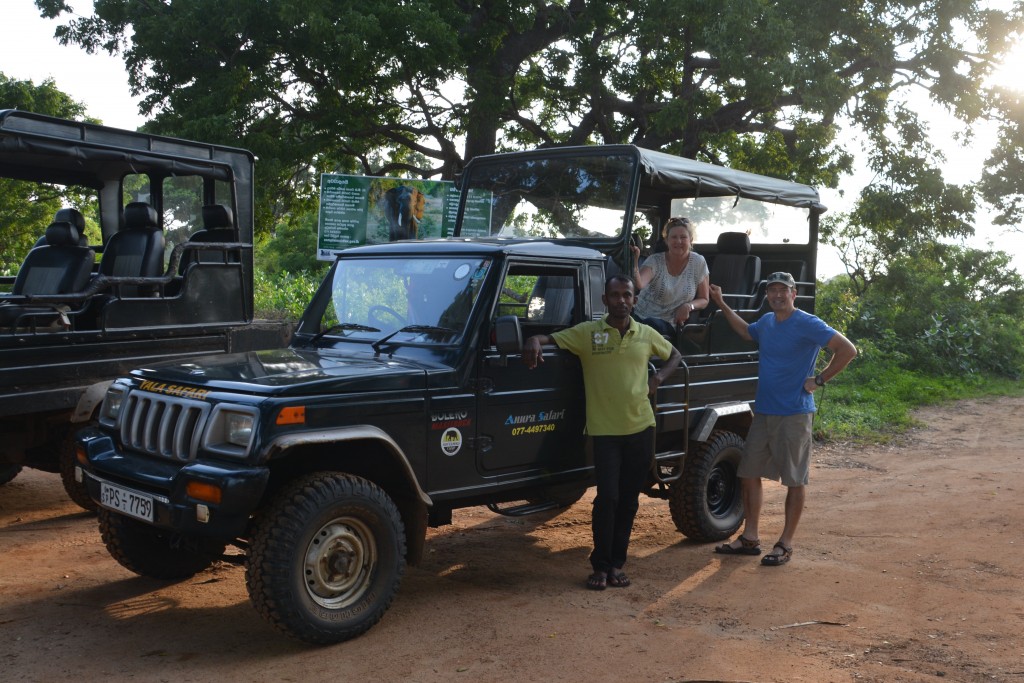
Our local driver with us down at the beach – we tried to imagine what it would have been like for a 10 metre wave to come crashing through here
This was cool stuff, in the middle of a game park, having just seen those two elephants and the huge croc, now standing on this long wide beach enjoying the ocean breeze. In the area we parked – we and about 60 other jeeps, no kidding – there were the foundations of a couple of buildings and a strange wave-like statue thing. Mr. T said this was a memorial to the 20 Japanese and Sri Lankans who were staying in this bungalow when the tsunami hit in 2004.
What a magical experience it would have been to stay in these bungalows on the beach amongst the swaying palms and crashing surf while wild animals roamed all around you. And then a 10 metre wave hits and wipes you out.
As we headed back to park headquarters in the late dusk we put away the cameras and enjoyed the feeling of a great afternoon. We were sticky and dusty and exhausted but exploring the game park from the back of the jeep and having all these new experiences had been just fabulous.
If you are a game safari gamer then you don’t blink at setting the alarm for 4.45 so you can be in your safari jeep and at the park’s front gate when it opens at 6am. And we were there. The best time to see animals, so they say, is in the first hour after dawn and the last hour before dusk. The rest of the time they tend to hang out in the shadows, high grass and deep shade to avoid the heat. And today would be another day in 33 degree heat so we had to catch that leopard early.
The air was slightly cool and the light was young as we followed the poor rutted and muddy tracks to our driver’s favourite leopard spotting trees, rocks and resting spots…but even with our fingers crossed we came up empty. Our driver knew we were on the hunt for the illusive leopard and he gave it his best shot but by the end of the morning we had to admit defeat – sadly, no leopards.
We were partly compensated by spotting an Asian black bear, a peacock opening his huge feathers to attract a partner, a fox and a mongoose. We also watched a great scene as a large troop of Grey Langurs rested and in some cases teased or played with a small herd of spotted deer. Almost comic and very entertaining. All the same, we were dusty, hot and tired…and no leopards.
That afternoon on the way back to the hotel we picked up our local driver’s son and two friends who were 12 years old and on their way to school. Spiffy in their blue short pants and white shirts they were happy to sit with us, one of them brave enough to try out his English. We exchanged lollies, names and destinations, all great fun, then they hopped off in front of their school with an exciting story to tell about strange foreigners.
We abandoned our open-air hot and dusty safari jeep for our leather-seated air-conditioned Hyundai and headed down to the coast for a few days of R&R on one of Sri Lanka’s famous beaches. We hadn’t seen any leopards but we love game parks and visiting Yala had been a great highlight.

